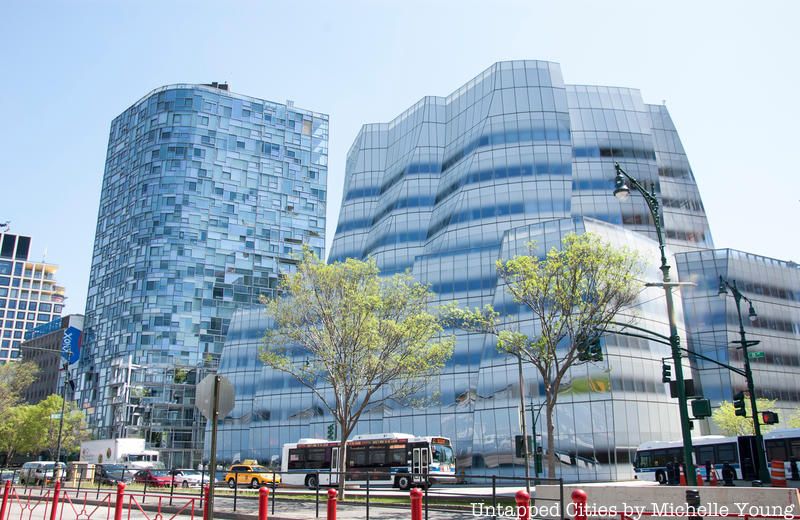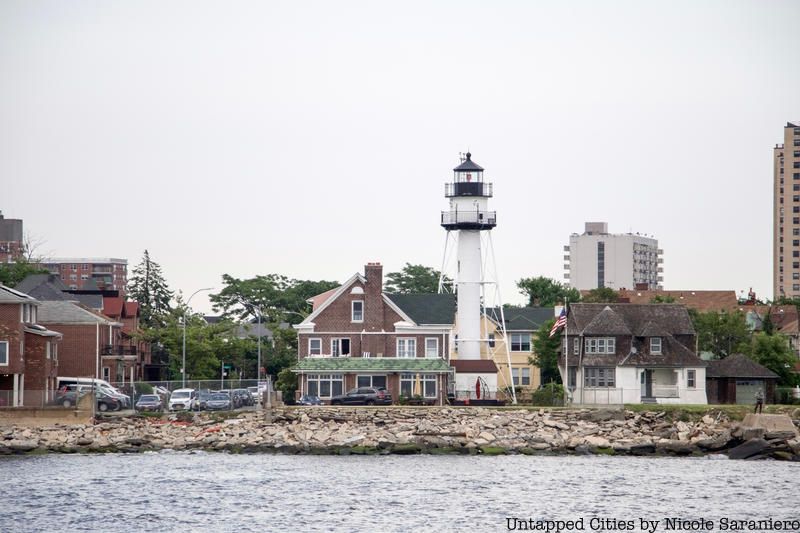Last-Minute NYC Holiday Gift Guide 🎁
We’ve created a holiday gift guide with presents for the intrepid New Yorker that should arrive just in time—


 Former Child’s Restaurant, Coney Island
Former Child’s Restaurant, Coney Island
In the first installment of the Untapped New York Nautical Architecture series, I discussed nautical themed architecture that was predominantly built and designed to serve the maritime industry. However, designing in this manner wasn’t always for functional purposes. As you will see here, the ocean and its denizens often lead to fanciful and playful architectural interpretations. These unique structures are not only pleasing to look at, but also reaffirm the significance of New York City’s oceans and waterways as an organic, yet integral, design element.
When discussing whimsical creations, it is imperative to include Coney Island in any exhaustive dialogue. Coney Island’s significance is due in large part to its location, serving as an escape for both residents of New York City and beyond. In fact, Coney Island was a premier resort destination from the mid 1800s to mid 1900s, featuring many buildings and attractions inspired by the sea and its creatures. One building that still exists is the former Child’s Restaurant constructed in 1923 by the firm Dennison & Hirons. This Spanish Colonial Revival building features terra cotta glazing adorned with seaside details such as seashells, galleons, fish, and even Neptune himself (AIA Guide to New York City Architecture). This building, which is a designated New York City Landmark, is in desperate need of restoration and repair. Recently, the city has expressed interest in retrofitting the building to become an entertainment complex — and reportedly Brooklyn Borough President Marty Markowitz has raised $50 million for the project. Yet as the Coney Island Redevelopment wheel continues to turn and turn, I am sure there will be many more proposals starring this survivor from Coney Island’s glory days.
To the northeast of Coney Island lies Sheepshead Bay, which derives its name from the sheepshead fish that was prominent in these parts years ago. The bay shares its name with the neighborhood, which is still a vibrant fishing locale and a notable spot for fresh seafood meals and nighttime strolls on the bay. Within the past twenty years, this area has seen rapid — and unsightly — development, spawned by the building boom that New York City experienced during this time. In prior examples, we have seen unique design inspired by a nautical environment; unfortunately for Sheepshead Bay, this is not the case. Gargantuan condo developments have been erected seemingly overnight, dwarfing this intimate bay area. These oversized and garish structures are a caricature of what informed design should be. To prevent further atrocities like this from occurring, the Department of City Planning rezoned the area in 2005, hoping to protect the area from out of scale development. Despite good intentions, this effort seems too little, too late as most of the area is engulfed with horrid architecture as evidenced by the photograph of “The Breakers.” Newport, it is not.
New York City’s first realization of the economic importance of its location was realized by Henry Hudson while sailing on the river that would eventually bear his name. I would argue that although the High Line is a successful adaptive reuse project, lauded by New Yorkers and visitors alike, it wouldn’t be as successful if not for its close proximity to the water, which provides a beautiful backdrop for the elevated vista. The native plantings and prescribed walkway, when alongside the water, offers a sense of serenity that is hard to come by in the middle of New York City.

I would posit that Frank Gehry’s IAC Building and Jean Nouvel’s 100 th Avenue, developments that were built simultaneously with the High Line, subtlely use the river as an inspiration and design element. In my eyes, the inflated-looking IAC Building is reminiscent of a boat alongside a dock or a ship sailing into pier and the success of Nouvel’s structure is the beautiful shades of glass that reflect the hues in the river and the sky. These are primitive observations of these innovative buildings but even in their simplicity, it is not difficult to see the importance of the water on the built fabric of New York City.
To conclude this piece, I find it fitting to return to the quintessential location that would not exist if not for the water — Coney Island. Although primarily known as a resort area, Coney Island is also the home of a historic lighthouse — that was both a guiding beacon for fishermen in the Atlantic as well as the residence for a family with strong ties to the area. The Coney Island Lighthouse was built in 1890 in response to the pressing need for assistance in navigating the narrow channel off Coney Island’s western point. This was a very busy route; in 1887 it was estimated that summer passenger traffic through the channel approached one million. As this journey proved to be hazardous at night, a temporary navigational beacon was constructed but it soon became imperative that a more permanent structure needed to be built. In 1888, Congress was presented with a petition for construction of a lighthouse and construction began in 1890 on the existing Coney Island Lighthouse (Bachand – “The Coney Island Light and the Nation’s Last Civilian Keeper”).
This building is the epitome of nautical architecture: its purpose was to guide sailors and their ships, yet it also added a functional and timeless structure to its shoreline. Adding to its importance, the lighthouse was continually in operation by Frank Schubert from 1960 until his passing in 2003 at the age of 88 years old. Frank Schubert was the last civilian lighthouse keeper in the United States — and the grandfather of my close friends, Scott and Christopher Schubert. For them, going to “Grandpa’s House” was a different experience than for most children. Scott explains that as kids, the Lighthouse was like a “big jungle gym that we’d play in — going up and down the tower. But it wasn’t until we were older that we understood the history and importance of the Lighthouse.” Chris concurs, discussing various childhood memories that are still regarded fondly: “we had the whole property to ourselves – we played football outside on the shore line, went fishing and camped out.” Beautiful memories were begun here — such as the wedding of Scott and Christopher’s parents on the front lawn of the Lighthouse. Conversely, the Lighthouse also helped facilitate a devastating memory, as Christopher recalls walking up to the top to get a devastating view of Lower Manhattan in the aftermath of the September 11, 2001 attacks.

To seafarers, maritime aficionados, historians and the Schubert family, the Lighthouse’s significance is immeasurable. Like good architecture, the Lighthouse transcends time and its presence is a physical reminder of New York City’s illustrious nautical history. In 2012, Frank Schubert was honored for his 66 years of service as a lighthouse keeper at the National Lighthouse Museum’s second annual Light Keeper’s Gala. This recognition, along with the intimate stories shared with me by the Schubert brothers, is a fitting way to conclude this piece that pays homage to a most fitting and practical example of nautical architecture in New York City.
To learn more about the education and preservation efforts of the Coney Island Lighthouse, please visit Scott Schubert’s website, www.coneyislandlightstation.com
Get in touch with the author at @LiteraLee
Subscribe to our newsletter